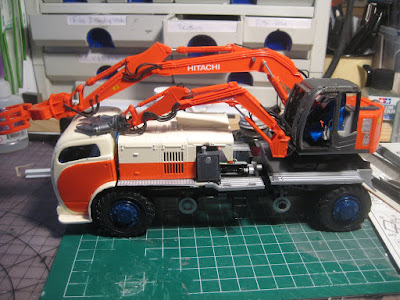
The orange styrene was good enough to allow for a quick polishing, followed by decals and clear. It would have been much slower if I had needed to paint it. Overall the build is good but not competition level; however I might show it anyway at some of the shows this fall.

The kit came with Studio 27 decals and photo-etched detail sheet to convert the European version driven by Hans Stuck, to the North American version driven by Gilles Villeneuve. I added BBS wheels from Scale Productions and front discs from Model Car Garage. The BBS wheels are very nice, and Scale Production has little centre wheel nuts that are a nice snug fir on a 2 mm thinwall brass tube.

Decals were a pain and I forgot to scan the sheet before cutting them up. I am missing a #27 for the right side door, which blew up into a million little fragments. Sadly I am guessing this is long obsolete and will not be reissued unless Tamiya reissues the kit.

The 2-litre Formula 2 engine is a lovely little thing, and I added spark plug wires and fuel injection tubing. The exhaust manifold is lovely and it is too bad it doesn't connect to anything.

Sadly the engine compartment has very little detail beyond the engine, with no firewall or plumbing. Again most builders are going to leave the engine out and glue the hood shut for slot car racing where weight matters. I suppose I could have scratch-built a lot of stuff but decided to get it done rather than obsess over perfection.

So a quick build of an iconic car, as driven by Gilles Villeneuve to a Group 5 win (second overall to a 935) at Mosport in 1977. I am assuming he hadn't quite signed on to F1 at the time as I can't imagine any sensible F1 team leader allowing him to risk his life in sedan racing...































